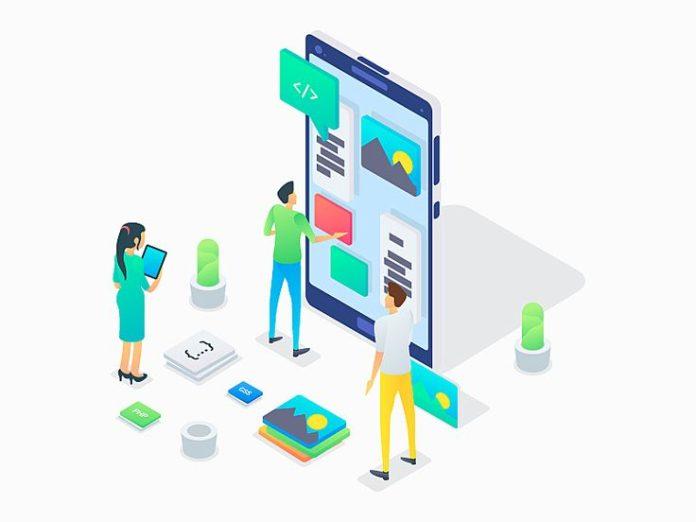Mobile applications, the emphasis on design has never been more crucial. As users interact with apps more frequently and on a wider variety of devices, the expectation for seamless and visually appealing experiences continues to grow. Creating an app that not only meets functional requirements but also delights users requires meticulous attention to detail and a deep understanding of design principles. The journey to achieving a pixel-perfect design is both an art and a science, one that involves careful planning, iteration, and a commitment to excellence.
The Importance of Design in Developing a Wearable Product
When it comes to developing a wearable product, design takes on an even more critical role. Wearable devices, by their very nature, have limited screen real estate and are often used in dynamic, on-the-go situations. This presents unique challenges in ensuring that the user interface (UI) is both intuitive and efficient. The design must account for quick interactions, minimal input, and clear, concise information display.
Designing for wearables requires a shift in thinking from traditional app design. The focus must be on creating a user experience (UX) that feels natural and effortless, despite the constraints of the device. This often involves simplifying complex tasks, optimizing for glanceability, and ensuring that the app’s visual elements are both functional and aesthetically pleasing. As developers and designers collaborate on wearable products, the synergy between form and function becomes the key to delivering an experience that truly resonates with users.
Balancing Aesthetics and Functionality
Achieving a pixel-perfect design is not just about creating something visually stunning; it’s about finding the perfect balance between aesthetics and functionality. A well-designed app should not only look good but also serve its intended purpose without compromise. This balance is especially crucial in the context of wearable devices, where users expect quick, frictionless interactions.
To strike this balance, designers must have a deep understanding of the user’s needs and behaviors. This involves conducting thorough user research, gathering feedback, and iterating on designs until the right balance is achieved. It’s about making sure that every element on the screen has a purpose and that the overall experience feels cohesive and intentional.
For instance, when designing a health monitoring app for a smartwatch, the primary goal is to provide users with timely and accurate information while minimizing distractions. This might involve using color and typography strategically to highlight important data, ensuring that buttons are easy to tap, and creating animations that guide the user’s attention without overwhelming them.
The Role of Prototyping and Testing
Prototyping and testing are essential steps in the journey to pixel perfection. Before an app goes live, it’s crucial to build prototypes that can be tested and refined based on user feedback. This iterative process allows designers to identify potential issues and make necessary adjustments early in the development cycle.
Testing should be done across various devices and screen sizes to ensure that the app delivers a consistent experience. For wearable products, this means testing on different wrist sizes, lighting conditions, and usage scenarios. By paying attention to these details, designers can ensure that the final product not only meets but exceeds user expectations.
Creating Consistency in Mobile iOS App Design & Development
In the realm of mobile iOS app design & development, consistency is key to creating an intuitive and user-friendly experience. Consistency in design helps users learn how to navigate the app quickly, reduces cognitive load, and builds trust in the product. This involves using a cohesive color palette, consistent typography, and uniform spacing throughout the app.
When developing an app for iOS, designers must also adhere to Apple’s Human Interface Guidelines, which provide a framework for creating apps that align with the platform’s standards. These guidelines cover everything from icon design and navigation to touch interactions and accessibility. By following these guidelines, designers can ensure that their app feels at home on iOS devices, providing users with a familiar and seamless experience.
Moreover, leveraging design systems can help maintain consistency across different screens and interactions. A design system is a collection of reusable components and guidelines that ensure a unified look and feel throughout the app. This not only speeds up the design process but also ensures that every aspect of the app aligns with the overall vision.
Conclusion: The Art of Pixel Perfection
Designing apps that delight and deliver is a complex yet rewarding process. It requires a deep understanding of the user, a commitment to quality, and a relentless pursuit of excellence. Whether it’s developing a wearable product or creating a mobile app for iOS, the goal is to create an experience that feels both intuitive and delightful.
By focusing on the details, balancing aesthetics with functionality, and maintaining consistency, designers can achieve pixel perfection. In doing so, they not only meet the expectations of today’s users but also set new standards for what mobile apps can achieve. The rise of cutting-edge design practices and tools continues to push the boundaries of what’s possible, paving the way for the next generation of apps that truly delight and deliver.
